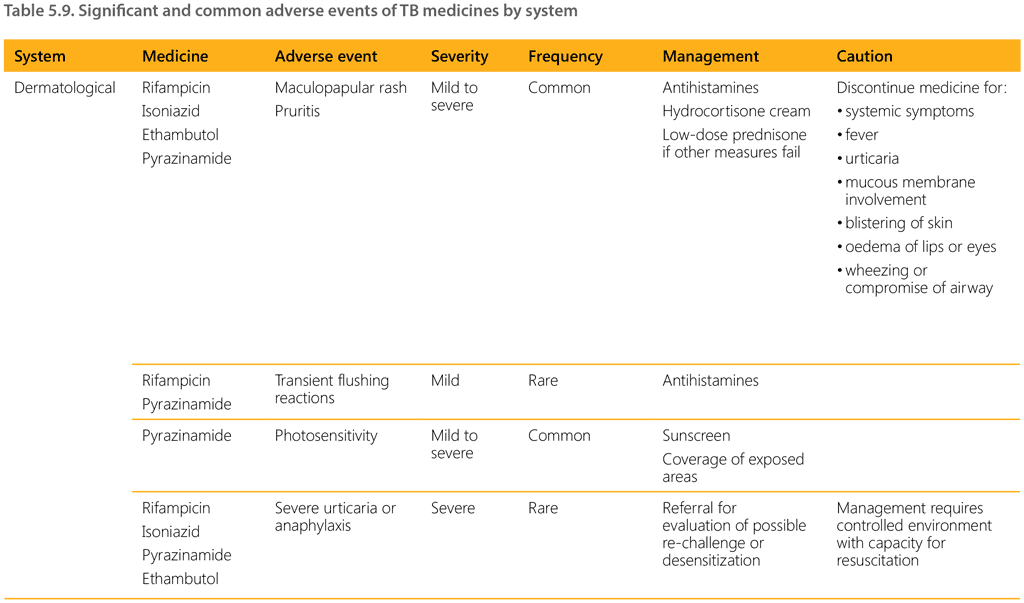5.2.12.2. Treatment interruption
Interruption in the treatment of drug-susceptible TB should be managed carefully. The duration, time on treatment at which the interruption occurs, and bacteriological status of the child or adolescent before and after the interruption should be considered. Table 5.10 has been modified from existing medical society guidelines to show the management of treatment interruption (109).
 Feedback
Feedback